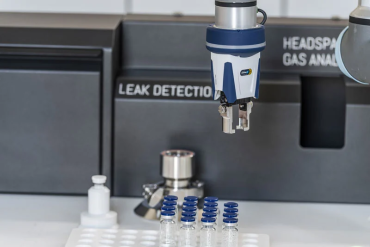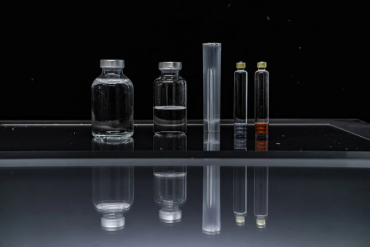Quality Control Solutions by Bonfiglioli Engineering, for the Pharmaceutical Industry
In the pharmaceutical industry, product safety and regulatory compliance are non-negotiable — and they begin with reliable packaging. From injectable drugs to sensitive formulations, maintaining container integrity is essential to protect patients and ensure therapeutic efficacy. To meet these high standards, manufacturers are turning to cutting-edge quality control technologies that are both precise and scalable.
In this article, we’ll explore four key non-destructive testing methods — Headspace Gas Analysis (HGA), Automatic Visual Inspection (AVI), Vacuum and Pressure Decay, and Lid Deflection. Each of these technologies plays a critical role in identifying leaks, detecting particulate contamination, and validating seal integrity — all while keeping false rejections low and throughput high. Whether you’re working with vials, syringes, BFS containers, or blister packs, these solutions help ensure your products are safe, compliant, and ready for market.
Headspace Gas Analysis (HGA)
Headspace Gas Analysis is a non-destructive technology that analyzes packaging integrity and the characteristics of the atmosphere present in a given product’s headspace without interfering with its contents. The technique is based on the analysis of the absorption of laser light by the target gas molecules present in the head space of the container being inspected. This technique detects the presence of humidity or oxygen, allowing the exclusion of potentially compromised containers. This technology is particularly useful in the quality control of pharmaceutical and food products, which are often sensitive to oxygen and humidity.

Automatic Visual Inspection
Visual Inspection allows the detection of cosmetic defects like scratches, inclusions, dents in a container, and the evaluation of the color, the correct fill level, and the presence of foreign particles in its contents. Automatic Visual Inspection uses a system involving high-resolution cameras, illuminators and computers receiving and processing data to record a series of images of the product, photographed at 360° and in motion. It also identifies any defects in the container and any particles or contaminants in the container. This technique is mandatory for testing injectable products, and is particularly effective for quality control of vials, glass bottles and containers, pre-filled syringes, or blow-fill-seal. The Bonfiglioli Engineering machines operate in a fully automated manner since computerized image analysis automatically separates non-compliant products from those suitable for sale.
Vacuum and the Pressure Decay Method
The Vacuum Decay Method (VDM) is a proven technology that uses vacuum to detect the presence of leaks in a sealed container. The product to be tested is placed in a test chamber, in which a given vacuum level is created. Analysis over time of the pressure values trend inside the chamber detects both micro-holes and macro-holes in product packaging, which is automatically rejected in case of non-conformity. This type of technology is also commonly used across various industries and guarantees excellent performance in pharmaceutical testing. Up to 1000 samples can be analyzed per minute and smaller test chambers can be developed to reduce the time required to perform the test and to identify smaller holes.

Lid Deflection
This technique uses a sensor system to check the positioning of the flexible lid sealing a container, identifying unexpected displacements that indicate the presence of leaks in the packaging. Again, the product to be analyzed is introduced in a test chamber in which a vacuum is created. The sensor in the chamber analyzes the formation of the lid, verifying that it is compliant to expectations. This technology automatically rejects non-compliant products.
About BE
For over 50 years, Bonfiglioli Engineering (BE) has been a point of reference for quality control and packaging integrity. We specialize in providing companies with customized product packaging inspection machines in the pharmaceutical industry.
Bonfiglioli Engineering machines include innovative control systems designed to guarantee maximum performance and to be integrated as efficiently and effectively as possible in the customer’s production line. This way, quality control — necessary for compliance with GMP and supervisory authorities’ regulatory requirements — is paired with the pharmaceutical industry’s need to limit processing times, avoid false rejections, and implement performance control systems that increase overall plant efficiency.
A complete service that begins with machine design but does not end with its installation on the customer’s site is guaranteed. Regular support in managing machine maintenance operations, malfunctions and upgrades or modifications required, is provided to satisfy all production needs. Expertise in quality control in the pharmaceutical sector, is coupled with the ability to provide customized and innovative solutions designed to guarantee high performance even in the long term.
The main test methods implemented are Headspace Gas Analysis, Automatic Visual Inspection, Vacuum Decay and Pressure Decay Method and Lid Deflection. These diverse leak detection and packaging integrity technologies are paired with innovative product handling systems to meet the testing needs of all kinds of pharmaceutical product.
Citations
This article is inspired by information from Bonfiglioli Engineering.
- Bonfiglioli Engineering. “Quality Control Solutions by Bonfiglioli Engineering, for the Pharmaceutical Industry” – Bonfiglioli Engineering, BONFIGLIOLI ENGINEERING S.r.l
